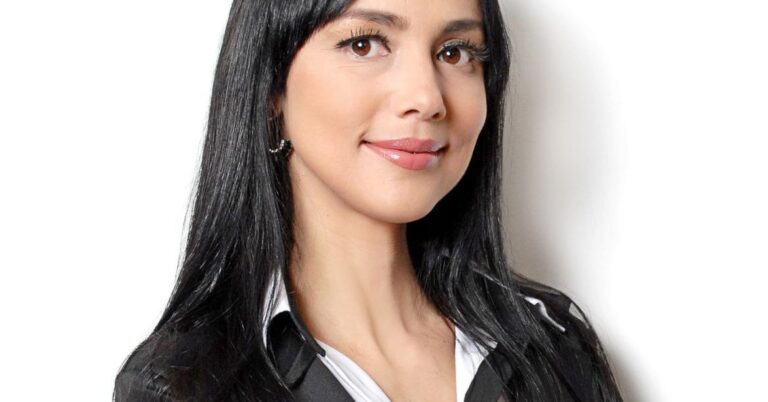I came of age during the 1980s at the onset of the AIDS epidemic. Living in the San Francisco Bay Area, our news, talk shows, and conversations were steeped in fear, othering, and shame about folks who were or might be infected by the virus. As I entered college, the collective psychological trauma created by the media about HIV/AIDS affected how I viewed sex/sexuality. Those messages impacted my mental health, sexual well-being, and sense of power in ways that were far more profound than I realized at the time.
I desperately wanted to move past the atmosphere of fear and deepen my understanding of the virus and its impact on individual human beings. This led me to work in the HIV/AIDS field. After I graduated, I joined a well-respected training institute as a lead trainer, curriculum designer, and cultural competence specialist.
Part of my work at the institute focused on addressing stigma. Stigma creates a deep sense of shame and othering. It is dehumanizing and breeds fear and silence.
I was passionate about addressing the stigma of living with HIV, healing those wounds, and learning from the wisdom of those living with HIV. While I was not personally living with HIV, the collective social narrative shaped by bigotry, stigma, and shame resided deep within me. Thus, I took up the work of educating myself.
I was surrounded by a team that embodied the principles of cultural humility—that is, the lifelong process of self-reflection, self-critique, and commitment to understanding and respecting different points of view. This involved moving toward our fears and internalized biases in an effort to unlearn, examine, and reconstruct them. This process helped me heal from the negative stereotypes and internalized HIV stigma I had been exposed to. Cultural humility leaves no room for stigma but rather promotes honesty, clarity, understanding, love, and acceptance of each other and ourselves.

Bran Sodre / Pexels
The Practice of “Experiencing”
As I embraced cultural humility, I took up a practice I refer to as experiencing. Experiencing helps us achieve cultural humility by making the invisible and unknown clearer. We can’t fully know what another person is feeling or experiencing—especially if we don’t share their identity group. However, we can become more sensitive and attuned to their reality through intentional communication, learning, and community solidarity.
My first experiment with experiencing went like this.
While I was doing HIV/AIDS peer education work, I subscribed to POZ Magazine, which provides information as well as heartwarming/heartbreaking stories for the HIV community. Generally, I read the magazine at home. As I sought to deepen my felt sense of the stories of stigma and fear so many of my clients shared, and what it was like to walk through the world with HIV, I developed an experiencing practice of reading POZ on the Bay Area Rapid Transit (BART) train going to work.
I immediately noticed that when folks saw what I was reading, they stood up and moved away. People stared at me with disgust or disbelief and seemed to become uncomfortable in their bodies. Never once did anyone ask what I was reading, offer a smile, or relax around me.
This happened daily for weeks. With each interaction, I became more painfully aware, and at times even felt unsafe. Of course, I could put away the magazine any time I chose. Or I could tell the person staring at me that I was doing this for work, or studying up on my clients. However, that wouldn’t have been staying true to the practice of experiencing. In this practice, we don’t move away from discomfort but instead lean in.
I told myself that if my clients were brave enough to speak out about their lives and hold the onslaught of suffering handed to them day in and day out, I could surely hold to this experience for an hour-long subway ride. And so I did.
Experiencing was painful but it was also an eye opener and a humbling gift. It lit a fire in my heart to become a stronger advocate, ally, and friend in the HIV community. It also made me reflect on the ways I had unknowingly colluded or enabled the behaviors I was now witnessing. Most important, it deepened my sense of cultural humility toward the community I was serving.
Experiencing in this way deepened my cultural humility in ways I had not imagined. It turned my fear into a righteous power. Abhishek Vanamali (2021) defined righteous power as follows:
It means to have compassion and kindness towards all people, and all living things at all times…. It means to develop a keen sense of right and wrong, and do unwaveringly what’s right…. It means relinquishing all prejudices and judgments towards other humans…. It means contributing to this world and to the progress of this world…. It means growing one’s self by giving it up. It is about giving, without expecting to receive.
Try It On
If you’re interested in developing your cultural humility, consider trying the practice of experiencing. In this exercise, you will intentionally seek an uncomfortable experience in which you have an opportunity to expand your empathy, compassion, and understanding.
Think about where you see stigma in the world around you, and then think about a way that you could lean into that. For example,
- Read something in a public place, as I did
- Attend a religious service with a group you know has been ostracized
- If you live in an area where no one wears masks, wear a mask
- Put a bumper sticker supporting a marginalized group on your car
This practice should be taken on with great care and understanding. Before taking up this practice, it is important to find a solidarity partner in the community you are seeking to experience so you can clarify your intentions and ask for permission. Be prepared for a “no” response if your partner or anyone else thinks you are treading where you are not welcome.
Never do anything that would put you in danger. And never do harm. This practice should not lead you to assume you now understand what someone from another cultural group is experiencing. Rather, it is about gaining greater clarity for yourself about stigma and discrimination. It is not meant to minimize another’s experience of daily stigma or oppression. Be careful not to appropriate anything from another culture.
After you have begun your practice of experiencing, consider whether, in doing this exercise, you have gained righteous power.



















+ There are no comments
Add yours